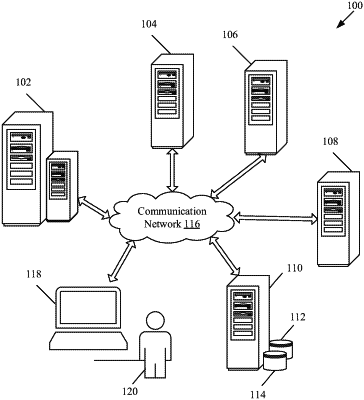| CPC G06Q 10/0633 (2013.01) [G06Q 10/1093 (2013.01)] | 31 Claims |

|
1. A system, comprising:
a memory configured to store instructions; and
a processor in a computing device associated with an industrial environment, the industrial environment includes a plurality of machines, wherein the processor is configured to execute the instructions, and based on the executed instructions, the processor is further configured to:
store, in a database, a plurality of orders received for a plurality of product items produced in the industrial environment from an input/output (I/O) device, via a communication network;
determine a first workflow sequence for a primary workflow stage of a workflow unit for the plurality of product items based on a minimal violation of at least one of a first set of constraints associated with the primary workflow stage, wherein
the minimal violation of the at least one of the first set of constraints is represented by at least a time delay,
generate one or more second workflow sequences for one or more secondary workflow stages of the workflow unit concurrently with the determination of the first workflow sequence, wherein the generation of the one or more second workflow sequences is based on a transformation of the first workflow sequence according to a combination of:
multiple threads selected from a defined thread pool in the memory based on a specification of the processor, and the multiple threads optimally allocated to one or more instances of a transformation engine for the transformation,
a set of interdependent constraints of the first workflow sequence and the one or more second workflow sequences retrieved from the database,
operational factors retrieved from the database, and
a selection of transformation technique associated with a set of computations of one or more sequence parameters, wherein
the selection of the transformation technique is based on the set of interdependent constraints, and one or more correspondence tables retrieved from the database, and
the one or more sequence parameters include at least a sequential displacement factor associated with a sequential displacement corresponding to each of the one or more secondary workflow stages, a priority factor, and an engineering change boundary (ECB), and
the ECB indicates:
a boundary ahead of which the sequential displacement is inapplicable, and
a boundary condition for segregation of the plurality of product items based on an engineering criteria;
evaluate the one or more second workflow sequences concurrently with the first workflow sequence based on at least the sequential displacement;
obtain a global workflow sequence for the primary workflow stage and the one or more secondary workflow stages at run time based on the evaluation of the one or more second workflow sequences concurrently with the first workflow sequence;
execute a set of operations on the plurality of machines to produce the plurality of product items, wherein the execution of the set of operations is based on the global workflow sequence;
manage a set of parameters that corresponds to timing offsets by which the first workflow sequence is related with the one or more secondary workflow stages,
wherein the set of parameters are associated with the set of operations for the production of the plurality of product items;
control the execution of the set of operations on the plurality of product items to maximize a performance score for the set of operations, wherein the control of the execution of the set of operations is based on the set of parameters and a penalty score; and
display visualization of the set of operations for the maximized performance score for the production of the plurality of product items, wherein the display of the visualization of the set of operations is based on the obtained global workflow sequence and data retrieved from the database.
|